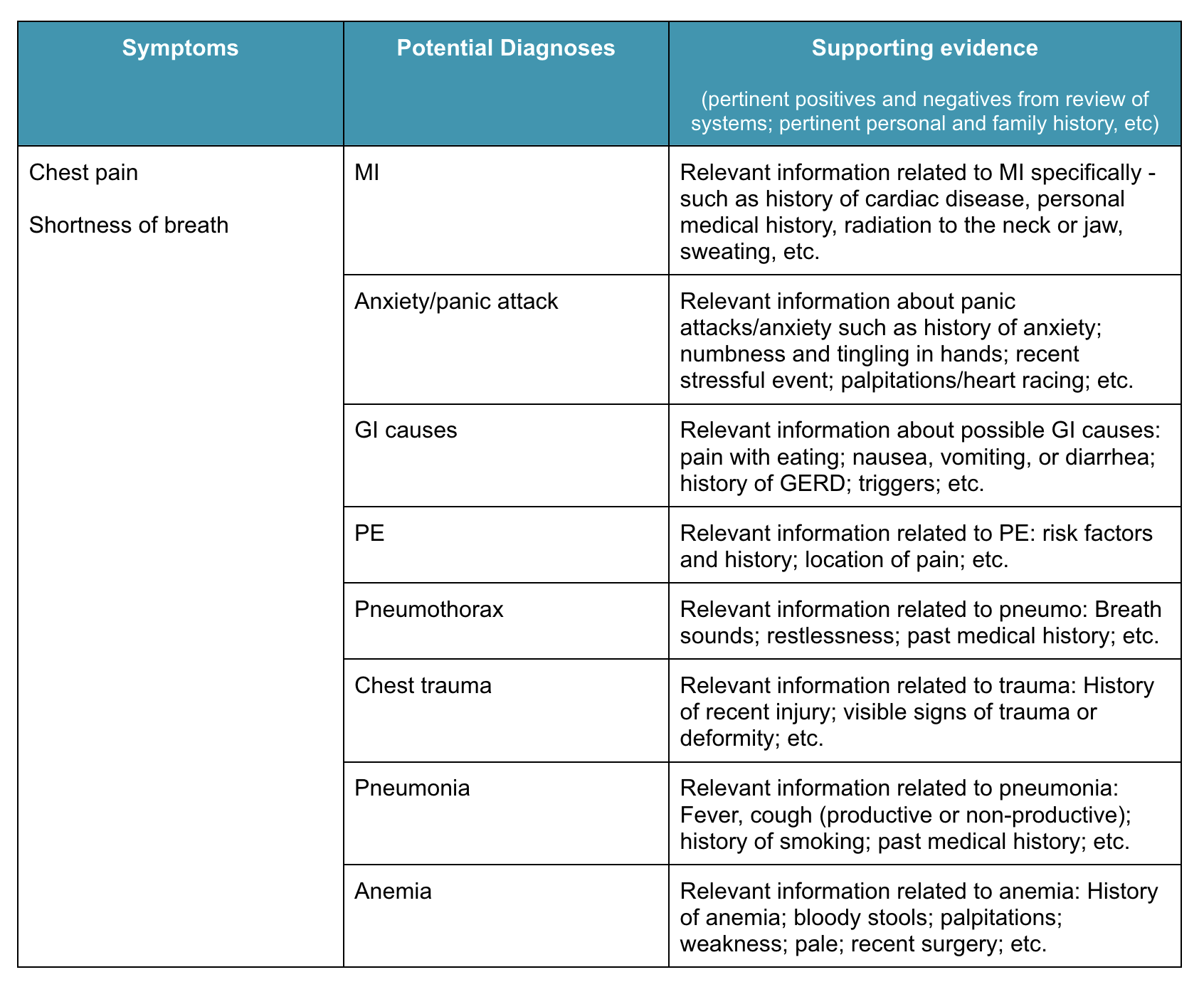Helping nurse practitioner students take better medical histories and make better diagnoses
An effective teaching strategy using a graphic organizer (table).
History-taking is perhaps one of the most critical initial components of a patient visit and an important skill for aspiring nurse practitioners. This step sets in motion everything that happens to a patient, such as what parts of the patient are examined, what diagnoses are considered, what tests are ordered, what diagnosis is made, and what treatments are prescribed.
Everything starts with the history.
When registered nurses (RNs) are training to become nurse practitioners, learning to take histories for the purpose of diagnosing is a change from the types of histories they are used to taking.
Typically, RNs take histories with the purpose of collecting background information that can be presented to a physician or an advanced practice provider (such as an NP or PA). In turn, when they are training to become nurse practitioners, they often fall back on these familiar questioning formats to gain information. However, the information necessary to diagnose goes beyond this background information and seeks to help extract relevant details that can help the provider to rule in or rule out potential diagnoses.
Without an intentional and effective strategy, the aspiring nurse practitioner runs the risk of not asking enough questions (or the right types of questions), not considering enough potential diagnoses, and jumping to conclusions without adequate information to support them.
A graphic organizer in the form of a table can be a simple and effective strategy for teaching these aspiring nurse practitioners to take comprehensive, detailed, and relevant histories that can help them make better diagnoses.
Graphic Organizers
Graphic organizers are used to visually present information in a way that helps show connections and relationships between various pieces of information (the goal of history-taking). They can range from simple (such as a table) to more complex (such as learning maps, cluster diagrams, and lotus diagrams).
Below is an example of how this table was used to help nurse practitioner students improve their evaluation of a patient with chest pain.
Sample patient case:
Chief complaint: chest pain, shortness of breath
When working with students receiving this complaint from a patient, the majority of students would ask a few follow up questions about the complaint - such as where the pain is located, if the patient had any history of heart disease, if the pain radiated anywhere, or if they had other cardiac symptoms such as nausea or sweating. Some would even perform a simple review of systems.
The majority of students, however, would end up only considering 1-2 potential diagnoses such as an acute MI or angina. While these are appropriate and should be on the list of potential diagnoses, they are not the only diagnoses that can cause these symptoms. Since the students did not consider any other diagnoses, they, in turn, did not ask any additional questions related to other possibilities.
However, using a table as a way of organizing information can help students expand on their list, while also prompting them to provide supporting evidence through additional questions.
See the sample below:
There are a number of things that could be asked about each of these conditions. The point is that without listing them out and considering each of them, the novice NP has a hard time knowing which questions to ask and why.
Using this simple table helps them see ALL the symptoms the patient is having, list ALL the possible diagnoses to consider, and have a space to note relevant information related to each potential diagnosis.
This helps keep them organized and able to explore each potential diagnosis separately. It makes their interview intentional, instead of a generic review of systems that is not specifically connected to a potential diagnosis.
It also allows them to see it all in one place and begin to rule in or rule out a diagnosis as detailed information is gathered. This then sets them up to know what type of physical exam components are necessary because they know what diagnoses they are suspecting and can do the appropriate physical exam to match - instead of a generic exam.
In working with NP students over the years, I have found this simple table to be a very effective teaching and learning strategy for the skill of taking a good history and improving their diagnoses.

